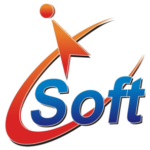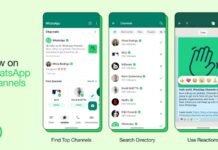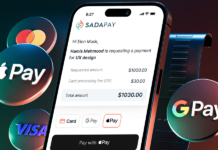Gather round, friends. Let me tell you a story of insane pivots, love, beauty, rumors, secret rooms, hidden messages, and the original iPad.
Craving and Envy
Our company, Agile Partners, started life as an enterprise web app developer. Born in the collapse of the dotcom bubble, Agile developed complex web apps for clients like Merck and Citibank, typically Java back ends and JSP or Cocoon/XML or sometimes AJAX front ends. We were luckier than many enterprise developers, with a fun mix of clients, projects, and exciting technologies.
Always in the back of our minds, though, was a craving to build something of our own. We envied early SaaS pioneers like 37 Signals with their Basecamp product. We began working on a collaboration / knowledge sharing SaaS product (the space Slack occupies today) code-named Morning Tea. We used Morning Tea heavily ourselves, and were toying with a plan to get an MVP into the hands of beta testers, when, on January 9th, 2007, Steve Jobs announced the iPhone. In the tech world, the Most Exciting Technology Of The Day landscape changed instantly.
iPhone Sans Apps
What Jobs didn’t announce that January was support for 3rd party apps. Given Apple’s large developer community on the Mac, and given that iPhone OS was based on Mac OS X, this was disappointing and puzzling. Maybe phones are different, we pondered, maybe Apple can’t allow 3rd party apps … but on the other hand, how could Apple fail to unleash the creativity of its developer community on such a promising new platform?
We concluded that, sooner or later, Apple would open iPhone OS to developers. And once they did, we’d shelve Morning Tea and put all of our energy into creating for the iPhone.
We had to wait 10 months, but on October 17th, 2007, Jobs announced on Apple’s “Hot News” page that Apple would indeed support 3rd party iPhone apps, and that the iPhone SDK would be released to developers in February.
Mother of All Pivots
So now we had a new problem: what should our first app be? My own (perhaps unimaginative) thinking centered around productivity apps, so when one of my partners approach me with the idea of a guitar utility, I was nonplussed. Over time, though, the idea grew on me. Using the iPhone mic to detect musical notes in an incoming audio stream was really cool, and the iPhone’s gorgeous, high-resolution screen seemed the perfect canvas for a beautifully-rendered skeuomorphic tuning meter that showed the real-time pitch of your guitar string.
Whether tuning-by-iPhone would actually work was another question. Pitch detection in an audio stream involves non-trivial math, and we had no idea yet if the 32-bit ARM processor on the iPhone could handle it. Another potential showstopper was audio pipeline latency (ask Android audio developers!). If the latency was higher than a few tens of milliseconds, the tuner needle would feel laggy. So our first task was a proof of concept focused on the tuner algorithm and its visual display. Success! The iPhone’s little ARM handled the math just fine, its PowerVR MBX GPU drove the display nicely, and thanks to its OS X genes, iPhone OS delivered impressively low audio latency. So the concept was proved and GuitarToolkit was born. A few months and a ton of work later, it was one of the very first batch of iPhone apps in the App Store on Day One–July 10, 2008.
Apple Loved Us
Apple may have initially resisted 3rd party iPhone apps, but by early 2009 they realized that apps were a huge differentiator, and they sought out apps that showed off the iPhone’s full potential. Here the concept and execution of GuitarToolkit really shone: it was incredibly beautiful, thanks to luscious guitar fretboard and tuner visuals created by my partner John Berry; yet it wasn’t just eye candy but actually worked, fast and flawlessly. Furthermore, GuitarToolkit was a great “in your pocket” mobility story, because it eliminated the need for a whole gig bag filled with physical products, replacing not only a $30 dedicated hardware tuner, but also a stack of $10 chord and scale books. Finally, GuitarToolkit was a music app serving the coolest of cool demographics, guitarists. Given the importance of music in Apple’ world, in retrospect it’s not surprising that GuitarTookit showed up prominently on Apple’s radar.
We had fantasies that it was Steve Jobs himself who fell in love with GuitarToolkit; it was, after all, visible on the home screen of Steve’s demo iPad at that launch event. More likely, though, it was someone in marketing; or perhaps at Media Arts Lab, an agency who was deeply embedded with Apple’s marketing team at the time and did a lot of the nuts-and-bolts execution work on advertising campaigns. We began receiving calls that went as follows:
Apple: We need you to internationalize GuitarToolkit for the following languages: Japanese, simplified Chinese, German, French, and Spanish. By next week please.
Agile: Ummm … why?
Apple: Sign this NDA.
Agile: Here you go. So tell us more.
Apple: We’re considering featuring GuitarToolkit in an advertising campaign, but no promises. Will you do the internationalization?
Apple was asking us to jump, and it didn’t take too much reflection to respond, “how high?” GuitarToolkit ended up being featured in a series of worldwide print and TV campaigns, including one that appeared on the back cover of many of the most prestigious magazines in the U.S. and around the world.
On the eve of Apple’s iPad announcement, Engadget did a fairly comprehensive recap of Apple tablet rumors, dating back all the way to 2002. By late 2009, though, the rumors had gotten specific and credible: supply chain leaks detailing the specs of the tablet’s LCD screen, specific announcement and ship dates, even rumors that Conde Nast was building a magazine-reader app.
In the meantime, we had shipped our second guitar app, TabToolkit, a viewer / player of tablature (tab), the simplified music notation used heavily by guitarists. TabToolkit could display simple text-based tabs, but its real innovation was “live sheet music” in your pocket. An advanced live tablature format had become popular on desktop computers, thanks to software like Guitar Pro. Live tabs were sheet music on steroids, containing complete multi-track representations of songs, including notes, timing, instruments, and even effects like bends. Push TabToolkit’s Play button, and you’d see a scrolling display of the music notation, and hear a multi-track rendering of the audio, with multiple guitars, bass, and even drums, perfectly synced to the notation. We shipped TabToolkit 1.0 in September 2009, and it was every bit as good a showcase of the iPhone as GuitarToolkit. TabToolkit likewise got Apple’s attention and advertising dollars, including a TV spot.
The Perfect iPad App
TabToolkit’s September 2009 release date coincided with a marked increase in the quantity and credibility of Apple tablet rumors. As impressive as it was, TabToolkit was severely limited by the iPhone’s 3.5″, 320 x 480 screen; only a bar or two of music notation could fit legibly. On a tablet screen, though, it would be possible to display an entire page of notation. We were convinced that TabToolkit-on-tablet could be another showcase-grade win for Apple’s app story. We began to wonder, especially in light of the Conde Nast rumor, whether Apple might give us pre-release access to their new device. If it existed.
I might be remembering it wrong, but I believe we actually reached out to Apple before the iPad’s official announcement on January 27th, 2010. I seem to recall a stilted conversation with Craig, our Apple Developer Relations contact, that went something like this: “If, perchance, Apple happened to be working on a hypothetical tablet device, which I know you cannot confirm or deny, then we would like to hypothetically request early access to said device so we could get TabToolkit running on it, because it will be most awesome on such a hypothetically large screen.” Craig’s response was, of course, beyond noncommittal.
I did find actual email evidence of what happened next: an email from Craig’s boss, dated February 4th, which included the sentence, “This is important.”
We signed a very strict NDA on February 16th, which required signatures from every single Agile employee that would lay hands on a prototype iPad.
Secure Facilities, or the Lack Thereof
The original idea was that Apple would personally deliver an iPad prototype to us, which we would keep chained to a table, in a controlled-access locked room, within our company offices. The problem was, as a 100% virtual / all remote work company, our only “office” was a shared co-working-style space in Manhattan.
Apple was not amused. For several days it looked like we were screwed – no early access for us. Finally someone suggested a compromise: we could come to Cupertino instead, and use the iPad prototypes inside a controlled location at Apple’s Infinite Loop campus. Not what we had hoped for, but it proved to be good enough and makes for a much better story.
The Secret Room
On Monday March 8th 2010, three of us made the trip to Cupertino. Did I mention that Apple is serious about the physical security of pre-release prototypes? They took it seriously even in the middle of their Infinite Loop campus. The iPad prototypes we got access to were located in a locked, nondescript, unlabeled room on the second or third floor on the building that housed the Infinite Loop cafeteria, or maybe the one next door. The room had blackout curtains hanging inside the door so that, even when the door was open, you couldn’t see inside. The room had three or four sturdy industrial tables, each with an iPad prototype chained to it. Each iPad was completely encased in what appeared to be Kevlar, with just the screen and home button exposed. Almost none of the industrial design was visible – bezels, back, edges, even the iPad’s thickness, were all obscured by the bulky case.
Each table also had a Mac with a special Xcode that could build to the iPad. We spent the day tweaking app settings for the new screen dimensions, getting past beta glitches, and finally successfully building TabToolkit on the prototype iPads. One day was enough: we could see that TabToolkit ran amazingly well on the iPad, and that the iPad music notation experience, thanks to a 9.7″ 1024 x 768 screen, was everything we had hoped.
We submitted TabToolkit 1.1.1 with iPad support to the App Store on March 22nd, and it was listed as “ready for sale” on April 1st. Apple began shipping iPads on April 2nd.
WWDC VIP, WTF
The 2010 edition of Apple’s World Wide Developers Conference (WWDC) was scheduled for June 7th – 11th. We bought tickets the day registration opened, April 28th. Unlike later WWDCs, there was no script-driven instant sell-out, nor a ticket lottery in those days.
Strange things began to happen around June 1st. Craig reached out to explain that they’d had “execs looking at Tab ToolKit” ….
Then on June 2nd, I received a VIP invitation for the Steve Jobs keynote. Huh? Jobs keynotes were always mobbed, with a line running all the way around the Moscone Center block, and a VIP pass allowed me to skip the line, and get into the hall early with access to front-section seats, the prime Steve Jobs viewing zone. My email forward to John Berry was “Hmmm …” and his response, “Whoa….” Occasional upgrades to first class on the Continental Airlines Newark <=> O’Hare run were the closest I usually got to VIP treatment … very weird.
The Apple Design Awards ceremony was held on June 9th, and I recall it being the last event of the day, maybe even an evening event. It wasn’t unusual to skip the ADAs if you wanted to grab an early dinner or hit a party with friends. We had nine people from Agile at WWDC, and we might have skipped it ourselves in favor of a team dinner or something.
But early in the week, Craig and several other Apple friends took us aside to say things like “You ARE coming the the Apple Design Awards ceremony, aren’t you?” and “You definitely don’t want to miss the design awards this year!” and so on. We realized then that we were probably in the running for some kind of award, maybe “most improved” or “second runner up for music apps” or something. Winning an ADA? Nah.
So, then this happened … crazy time.









